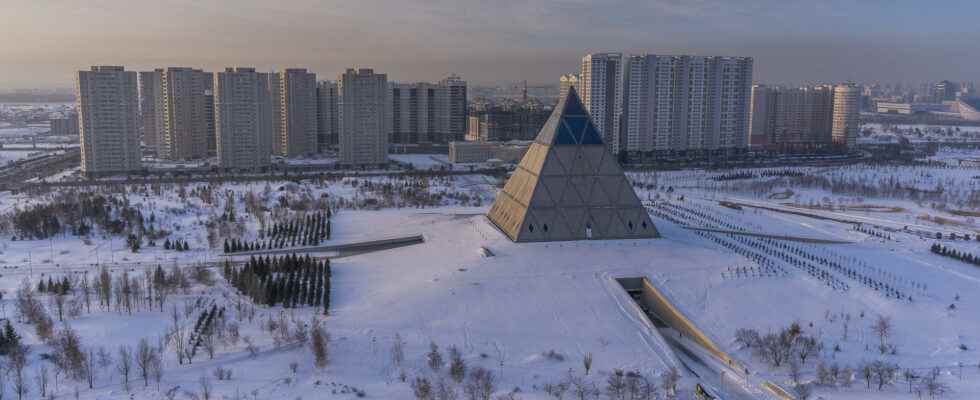“Welcome to Astana, the city we love to hate. » Ruslan Alieva rushes into the cold October wind, his face buried in the collar of his coat: impossible to decipher the emotions crossing his mind when he pronounces these words. He started his taxi service two hours ago and is about to leave after a coffee break.
Eight years ago, this 30-year-old left his village to join the Kazakh capital, with dreams in his head. “I thought I would make a fortune in three years. » He first worked in construction, brought his family, then bought a second-hand Russian car to become a taxi. “I work like crazy, but I’m still not rich! »he suddenly exclaims, half amused, half annoyed, looking up at a huge office tower.
He lives in the old Soviet part of the city, but he works here, in the wealthy and flashy center, where he is sure to find clients. To its right rises the Bayterek, a tall tree-like structure on top of which sits a golden sphere. It represents the myth of Samrouk, the Kazakh bird laying a golden egg every year. “It’s our own Eiffel Tower, for touristshe said, trying to light a cigarette, despite the wind. It’s silly, but every time I watch it, I believe again in the beautiful promises of Astana. »
Promises, the Kazakh capital, an oasis of glass and concrete lost in the middle of the steppes, embodies more than one. And not only in the eyes of the thousands of workers who came from the countryside to earn a better living, like Ruslan Alieva. It is, above all, the modern face that Kazakhstan, with a population of 19 million, wishes to offer the world, with a lot of architectural prowess.
At the example of Palace of Peace and Reconciliation, a pyramid with an esoteric silhouette hosting an ecumenical center; the Ak Orda presidential palace, a grandiloquent copy of the White House topped with an azure dome; or the Khan Shatyr (“sovereign’s tent”), a gigantic thermoplastic and steel structure mimicking the tents of ancient nomads, housing shops and luxury spas… Not to mention the Ministry of Finance, which, seen from the sky, takes the form of a “$”, the American dollar, symbol of the liberalization of the economy after 1991.
“The idea was to build a new vision of the future for the country”
Strolling through the wide avenues of Astana is to experience the strange sensation of being somewhere between New York, Dubai and Moscow, with a hint of Asia. “In a way, this city is the Dubai of the steppes, and it is above all a geopolitical project”summarizes Pascal Lorot, special representative of the Minister of Foreign Affairs for economic diplomacy in Central Asia.
You have 72.81% of this article left to read. The following is for subscribers only.
